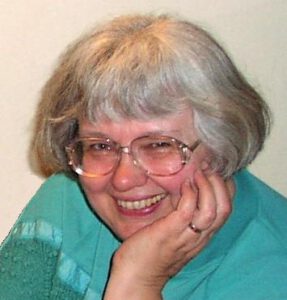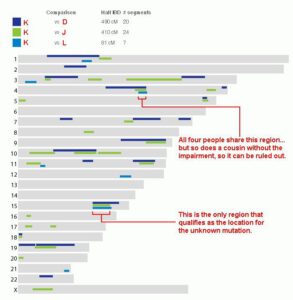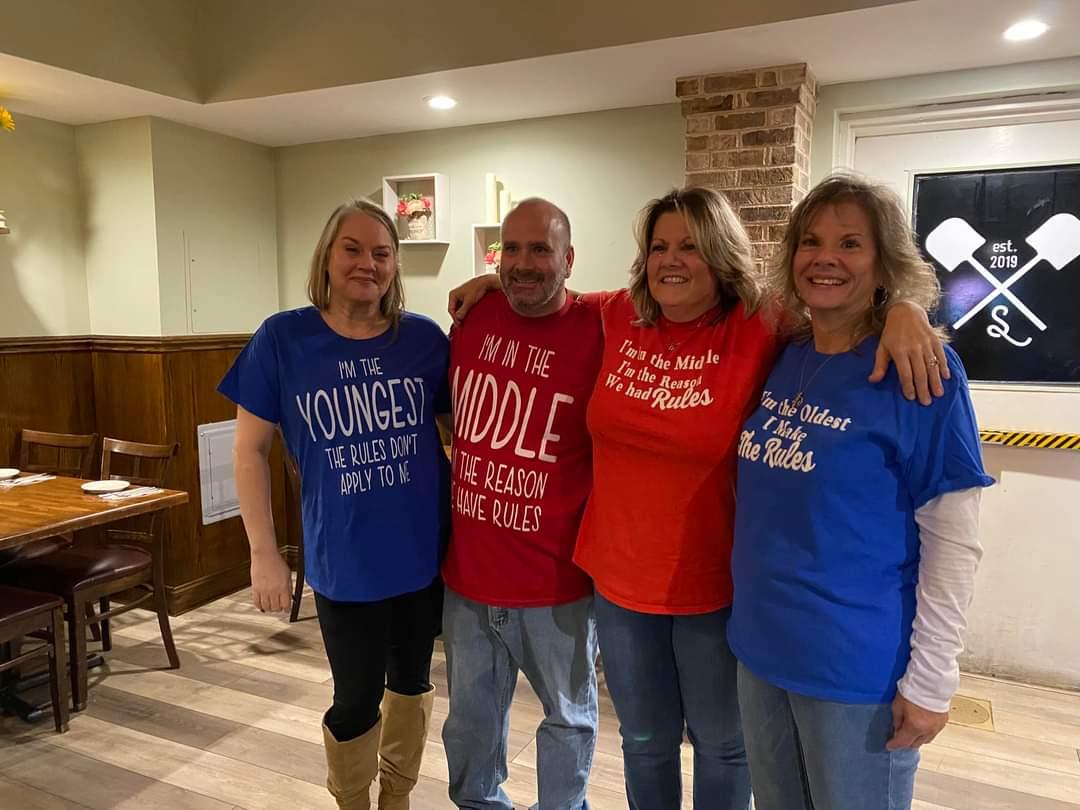By Ann Turner, M.D.
Many members of my extended family have inherited a mutation responsible for hearing impairment. The loss is detectable in childhood and progresses gradually over the years. I began wearing hearing aids forty years ago, when I was thirty.
A Search
We have participated in several genetic studies over the years, but the cause has not been found yet. I decided to see how far I could get by testing cousins with and without the hearing impairment. With testing could I at least identify a chromosomal region shared by just the relatives with the condition?

Dr. Ann Turner, MD
I began with myself and two cousins in 2007 when autosomal testing was first offered at deCODEme (at a cost of nearly $1000) and continued adding cousins and even spouses as the prices dropped more and more at 23andMe.
Using traditional genealogical techniques, we were able to track the trait back through almost 200 years to John Riley (born about 1813 in Stafford County, Virginia) or his wife Mary Ellen Bigger (born about 1810 in County Antrim, Ireland).
Hearing Loss
We knew from memories of older family members that one of their children, Eliza Jane, was very hard of hearing. A letter written in 1893 by Eliza Jane to her sister Allie survives, wherein she asks:
“Does your hearing fail you anny? [sic] George is quite bad.”
Her brother George was 47 at the time, and Allie was 40. Clearly they were anticipating a condition that “ran in the family,” even before the term genetics was coined. As it turned out, Allie was not affected, but another brother, James, had a more complicated history.
James’ hearing difficulties are documented in some Civil War pension application papers. After the war, James married, became a carpenter, and had six children. He died at the age of 57 after a fall from some scaffolding. A coworker had called a warning that the scaffold was not secure, but he did not hear. His widow then applied for a Civil War pension.
 Disability
Disability
There was some dispute about whether his hearing loss was a pre-existing condition, or whether it was related to his service, during which he had contracted the measles, a known cause of sudden deafness. He wrote in his own disability pension application:
“I was out of my head, and when I came to my senses the comrades of my company were taking care of me in the camp, and I was totally deaf, and have been severely deaf in both ears ever since.”
He was discharged, and his commanding officer wrote:
“This man was slightly deaf at the time of his enlistment. About the middle of October he was attacked with the measles and since his recovery he has been unable to hear even the loudest command.”
James would have been 18 at the time he enlisted, so if the hearing loss was noticeable at that age, he probably had both a hereditary and environmental explanation for his deafness. Some of his children were also known to be hard of hearing at a young age, but none of his living descendants still carry the trait (nor do any descendants of George).
What about the Genetics?
Those were some of the examples of the hearing impairment that we were able to trace through paper records, but what about the genetics? Could we trace the hearing impairment trait through DNA?
The Family Inheritance: Advanced tool at 23andMe is an easy way to visualize the chromosomal regions shared by different relatives. The figure shows four of the people I tested. They share the hearing loss, come from different lines of descent, and are the most distantly related possible. (Closer cousins share so many segments that the target wouldn’t stand out.) The answer to my initial question is a resounding yes! Other extended families may be able to follow this model of collecting cousins, which I have also described in a column for the Journal of Genetic Genealogy.
James Lupski has proposed the term “clan genomics” for this type of endeavor.
Now what? The sense of hearing is complex, with numerous genes affecting structures and functions. To date, 122 different loci (that is, general locations) have been associated with hearing loss. The actual gene has been identified for only half of those. None of the locations overlap the section implicated in our family, so we are exploring virgin territory. We’ve reduced the possibilities from 3 billion bases and 20-some thousand genes to a mere 15,000,000 bases and 278 genes (many with unknown functions), but there’s still a ways to go.
It’s highly unlikely that any of the SNPs in our genotype data from 23andMe are actually responsible, since the chip design focuses on relatively common variants. Thus I am participating in the exome pilot project at 23andMe, which will completely sequence the coding regions of all genes and (if we’re lucky) may identify a novel mutation. There may be no suspicious variants, or there may be a superabundance of potential candidates, but that’s part of the adventure.
In the meantime, I am always on the lookout for even more distant cousins who might harbor the same mutation. Circumstantial evidence makes John Riley the more likely ancestor, but he is a brick wall in my genealogy.
If the mutation originated with him, we might be the only people in the world to shed light on yet another gene important for the sense of hearing. If he inherited it from an ancestor, there might be other lines of descent out there who share some DNA with us in that part of chromosome 15. Either outcome would be intriguing.
To be continued…
23andMe’s services are not a substitute for professional medical or diagnostic advice. Always consult your physician for medical or diagnostic advice.
Ann Turner received her undergraduate degree in biology in 1964 and her M.D. from Stanford University in 1970. Her interest in genealogy began in midlife, when she read a family memoir about her father’s ancestors coming to America in 1635 on the ship Abigail. She began thumbing through the passenger manifest, where she recognized another familiar name–one of her mother’s ancestors. One family had headed for Connecticut and another for Vermont. Their descendants–her mother and father–met and married 300 years later in Iowa.
She founded the GENEALOGY-DNA mailing list at RootsWeb in the year 2000, the same week she received results from the first commercially available mtDNA test at Oxford Ancestors. She is the co-author (with Megan Smolenyak) of Trace Your Roots with DNA: Using Genetic Tests to Explore Your Family Tree and writes a regular column called ‘Satiable Curiosity for the Journal of Genetic Genealogy. She has consulted with Sorenson Molecular Genealogy Foundation and 23andMe.



